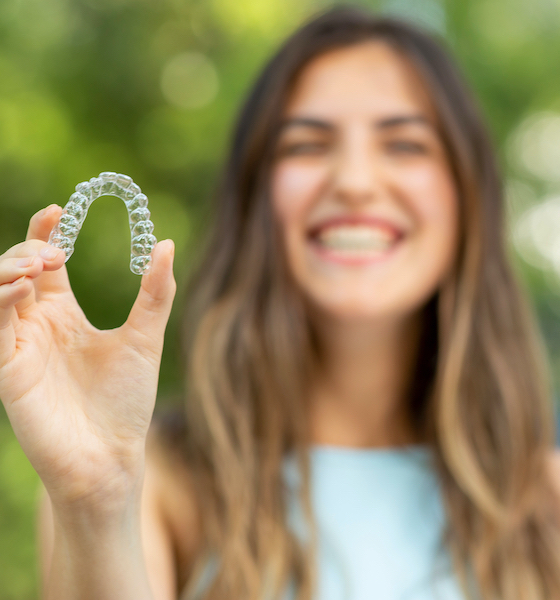Ever Wonder How Invisalign Works?
Understanding the science behind Invisalign® can help patients make informed decisions about their orthodontic treatment. Invisalign uses advanced technology and materials to straighten teeth with greater comfort and convenience than traditional braces. Discover the science behind Invisalign with Dr. Stephen Grussmark, our Diamond-Plus Invisalign Provider in Miami, FL.

The Science Behind Invisalign
Aligner Materials
The material used to make Invisalign aligners is called SmartTrack. It’s a type of thermoplastic specifically designed for Invisalign. SmartTrack is a patented material developed by Align Technology, the company that produces Invisalign aligners. It’s strong, durable, and flexible, which allows it to apply the right amount of force to move the teeth.
3D Technology
The process of creating Invisalign aligners involves the use of 3D technology. The first step is to take a digital scan of the patient’s teeth using a special scanner. The scan is then used to create a 3D model of the patient’s teeth, which is used to design the custom aligners. The 3D model allows the orthodontist to see how the teeth move throughout treatment.
Treatment Planning
Once the 3D model is created, your Miami orthodontist will use specialized software to plan the treatment. The software allows the orthodontist to create a digital simulation of how the teeth will move over time. This simulation is used to design the series of aligners the patient will wear throughout the treatment process.
Constant Force
Invisalign aligners work by applying a constant, gentle force to the teeth. Each set of aligners gradually moves the teeth closer to their final positions. The force applied to the teeth is carefully controlled to avoid discomfort or damage to the teeth or gums.
Control Points
To apply the right amount of force, Invisalign aligners have “control points” built into them. These small bumps or ridges are strategically placed on the aligners to help move the teeth in the right direction. The control points apply pressure to specific areas of the teeth to ensure they move correctly.
Attachments
In some cases, your South Florida orthodontist may also use small attachments on the teeth to help the aligners grip better. Attachments are small tooth-colored bumps that bond to the teeth. They provide extra grip for the aligners and help to ensure teeth move as planned.
Frequently Asked Questions
The length of Invisalign treatment can vary depending on the individual case. On average, treatment with Invisalign takes about 12 to 18 months, but it can be shorter or longer depending on the complexity of the orthodontic issue.
Invisalign can correct various orthodontic issues, including overcrowding, gaps between teeth, overbites, underbites, and crossbites. However, severe cases may require traditional braces or other orthodontic treatments.
After Invisalign treatment, retainers help maintain the straightened position of the teeth. These retainers can be either removable or fixed and are worn for a period to prevent the teeth from shifting back to their original position.
Common side effects of Invisalign include minor discomfort or soreness, especially when starting a new aligner. Some patients may also experience speech difficulties or increased salivation. In rare cases, Invisalign can cause allergic reactions or gum irritation. However, these side effects are typically mild and resolve quickly.
Discover a World of Possibilities with Clear Aligners!
Invisalign is one of the most innovative ways to straighten your teeth. The science behind Invisalign orthodontics allows for a painless, swift smile transformation customized to meet your needs. Discover how Dr. Grussmark can enhance your smile and life by calling our Miami, FL, office today at (305) 441-1200. You can also book a consultation online by filling out our contact form. We welcome patients from Brickell, Miami Beach, and Key Biscayne.

